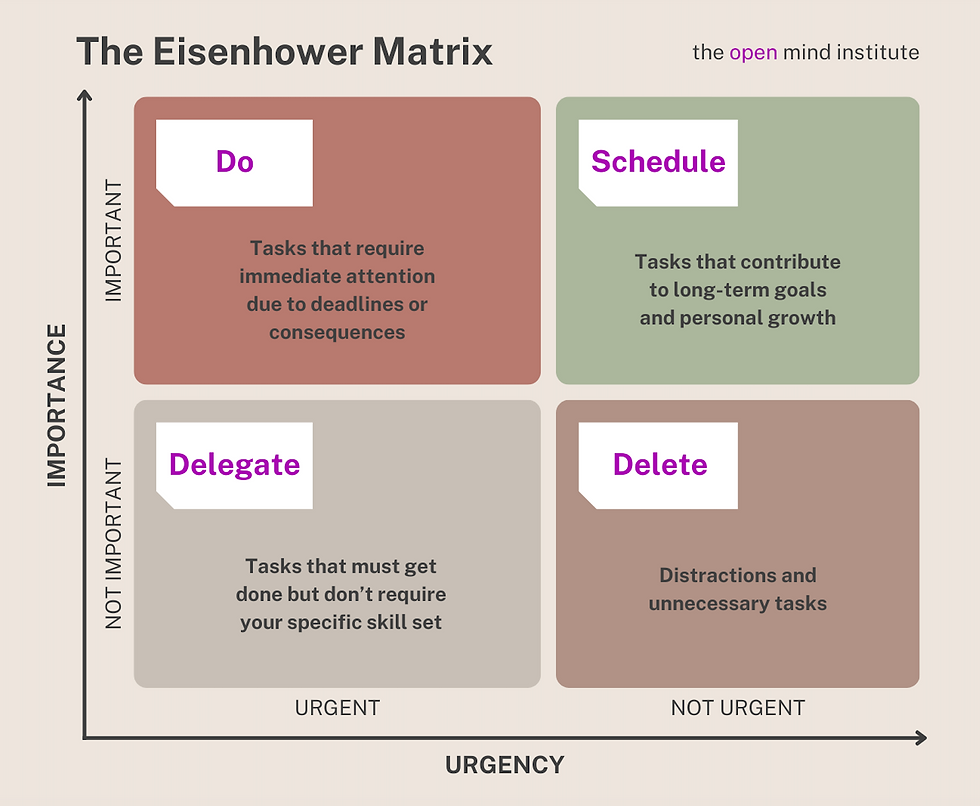ESA Skill 9: Time Management & Prioritisation
- The Open Mind Institute
- Nov 13
- 2 min read
Doing What Matters Most
We live in an era where being busy is often mistaken for being productive. Calendars are full. Notifications are constant. Multitasking is glorified. Yet, amidst all this activity, many professionals and teams still feel stretched thin, working harder but not necessarily achieving more.
True time management isn’t about doing everything faster. It's about doing the right things better. And that begins with prioritisation—understanding what truly drives value, impact, and alignment with your goals.

Why This Skill Matters
In dynamic organisations, every hour invested impacts results. However, when attention is scattered, energy leaks, and priorities become blurred, even talented teams lose traction.
Effective time management helps individuals:
Focus on what moves the needle, not just what fills the day.
Reduce burnout through smarter workload distribution.
Build consistency, trust, and accountability across projects.
For HR and culture leaders, this skill is central to:
Supporting psychological safety (by reducing overwhelm).
Driving sustainable performance, not sprint-based burnout.
Embedding clarity, focus, and intentionality in team culture.
5 Practices That Strengthen Time Management & Prioritisation
Start with clarity, not the calendar
Before you plan your day, define your “why.” Ask: What outcome matters most today? Clarity fuels focus.
Differentiate between urgent and important
Not everything that screams for attention deserves it. Use frameworks like the Eisenhower Matrix to separate reaction from intention.

Time-block your priorities
Protect time for deep work. When everything is a priority, nothing truly is. Boundaries create space for quality thinking.
Review and recalibrate
Check in weekly: Did I spend my time on what mattered most? Reflection turns time management from a plan into a practice.
Model balance as leaders
Leaders who manage time well set the tone for team culture. Promote pacing, presence, and permission to pause. Most of the time, it’s not about “doing more” but leading better.

The Takeaway
Time management is more than a productivity tool; it’s a leadership mindset. When individuals and teams align their focus with purpose, the ripple effect is felt across culture, performance, and well-being.
💡 Next Week: We'll explore Resilience & Stress Management; how individuals and teams can bounce back without burning out, turning pressure into progress and challenges into opportunities for growth.
If you’re ready to explore what’s possible with ATAR, we’d love to start that conversation.
Xin Yi Ng (Michelle)
Research & Development Lead




Comments